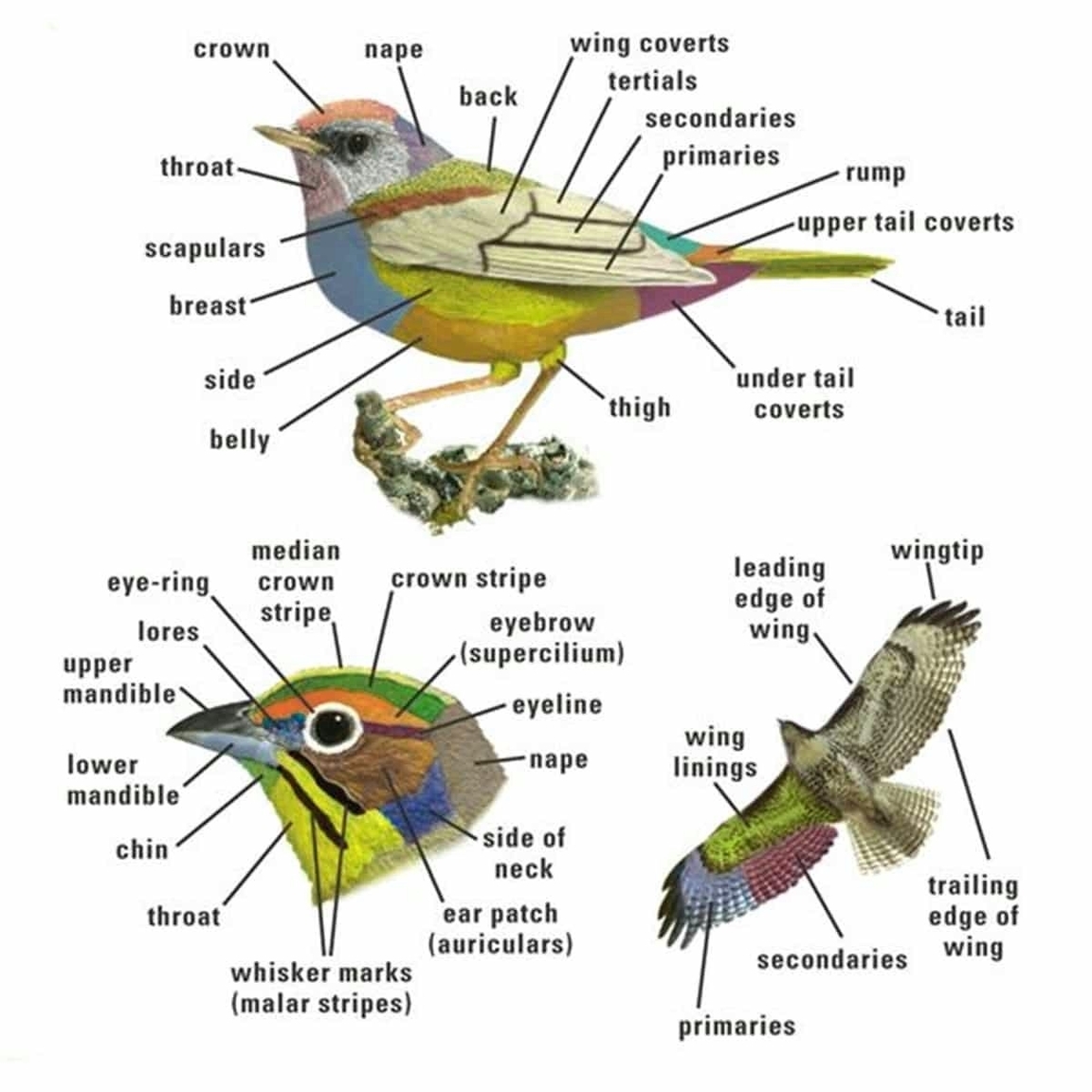
Birds are fascinating creatures with unique features that distinguish them from other animals. From their beaks and wings to their specialized internal organs, each part of a bird contributes to its remarkable abilities and behaviors.
The anatomy of birds can be divided into several systems, including the nervous, respiratory, digestive, and reproductive systems, as well as the skeleton and feathers. The nervous system of birds is highly complex and advanced, affording them a wide range of behaviors and cognitive abilities. Despite their relatively small body size, birds have a comparatively large brain, which is securely protected by the skull. The avian brain is divided into distinct regions that govern various functions, with the cerebral cortex occupying a prominent role in learning, problem-solving, and decision-making processes. The anatomy of birds exhibits highly acute senses, with their vision being particularly noteworthy. Many bird species possess the ability to perceive a broad spectrum of colors, including ultraviolet hues. This visual acuity aids them in numerous activities such as foraging, navigation, and mate selection. In addition to their exceptional visual perception, birds also possess excellent auditory capabilities. They can detect sounds at considerably higher frequencies than humans, allowing them to communicate, locate prey, and navigate their environment with precision.
The respiratory system of birds is also unique, with air flowing in one direction through the lungs, rather than in and out as in mammals. This unidirectional flow of air allows for more efficient gas exchange, enabling birds to extract more oxygen from the air than mammals can. The digestive system of birds is also specialized, with a crop and gizzard that aid in the breakdown and processing of food. The reproductive system of birds is also highly evolved, with females possessing only one ovary and oviduct, and males possessing a cloaca that serves as both the exit for waste and the entrance for sperm.
The skeleton of birds is also highly specialized, with many bones fused together to form a rigid structure that is both lightweight and strong. The wings of birds are also unique, with feathers that provide lift and enable flight. Feathers come in three main types: contour feathers, flight feathers, and down feathers. Contour feathers are the most recognizable and cover the bird’s body, wings, and tail. Flight feathers include the primary and secondary feathers found on the wings. Down feathers are fluffy and soft, providing insulation and warmth.
The beak of birds is also highly specialized, with different shapes and sizes depending on the bird’s diet and feeding habits. For example, birds that feed on insects have sharp, pointed beaks, while birds that feed on seeds have thicker, more robust beaks. The legs of birds are also highly adapted to their environment, with some birds possessing long, slender legs for wading in water, while others have short, powerful legs for running on land. The eyes of birds are also highly evolved, with many species possessing eyes that are larger than their brains. This allows for exceptional visual acuity, enabling birds to spot prey from great distances.
